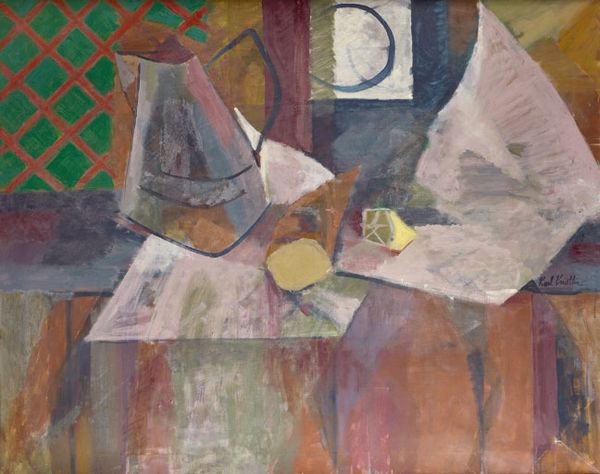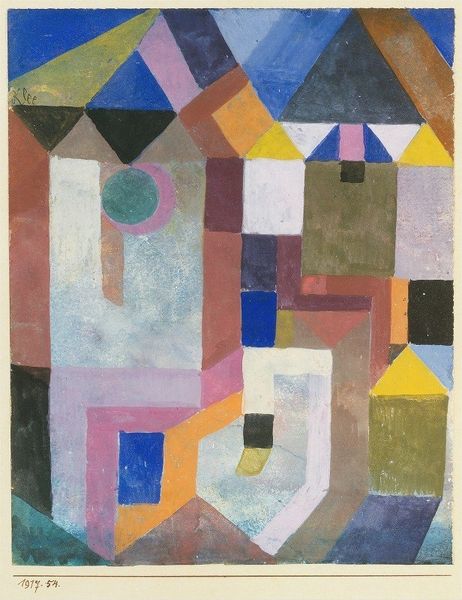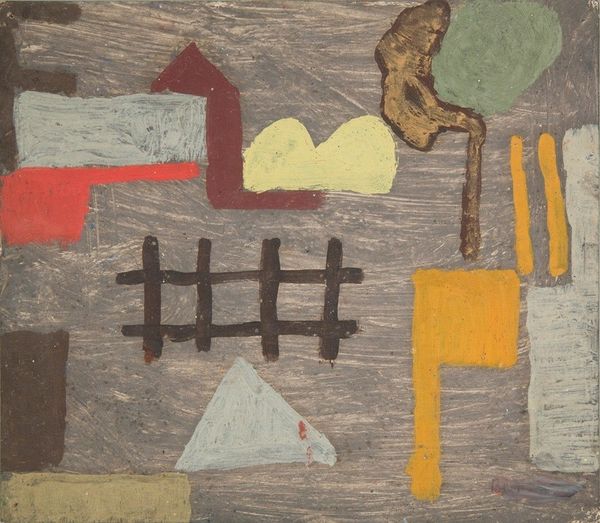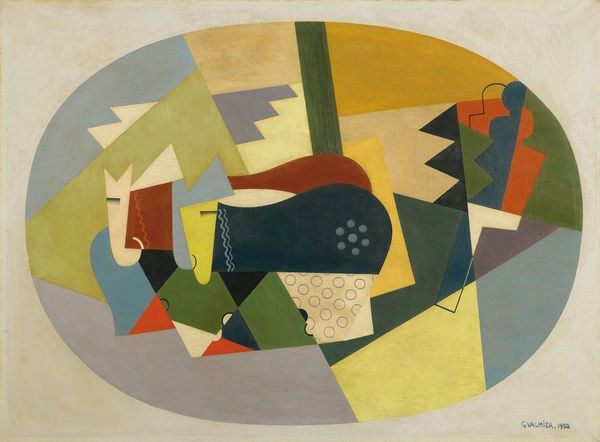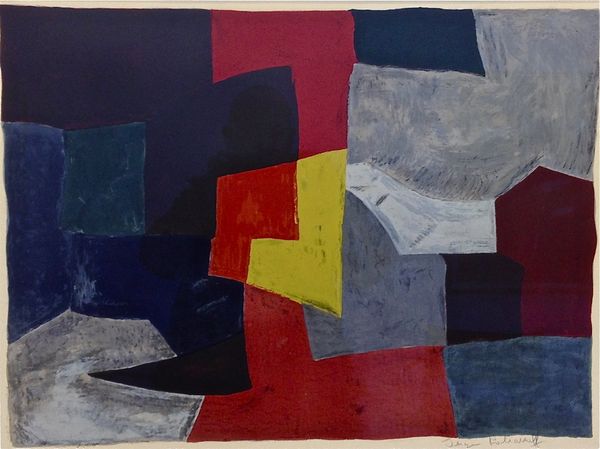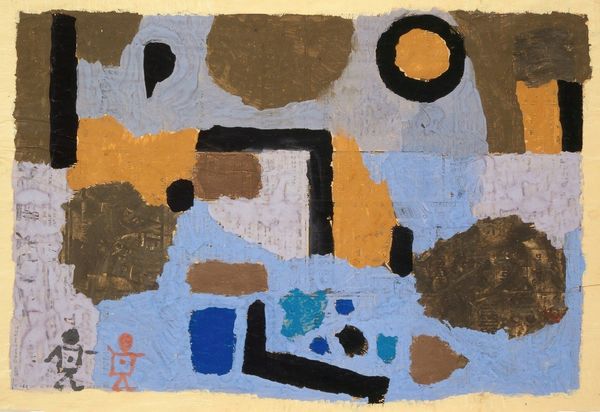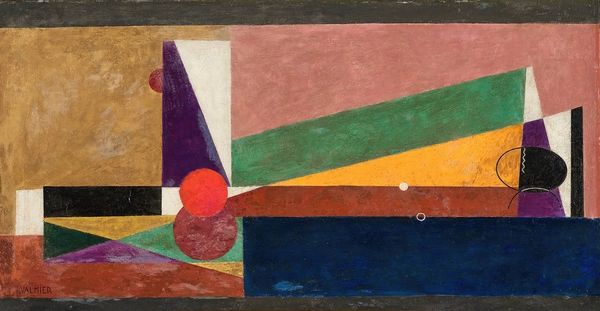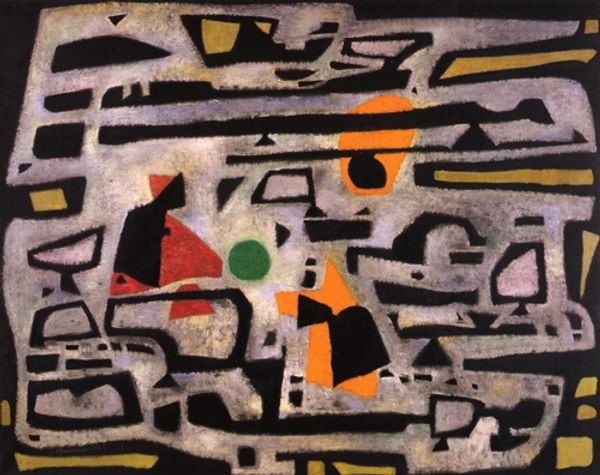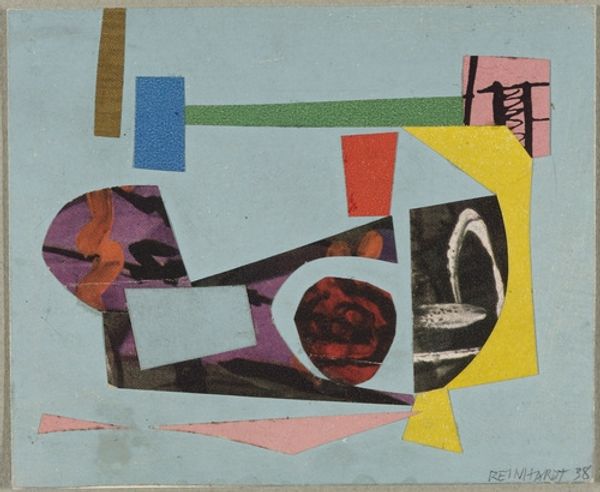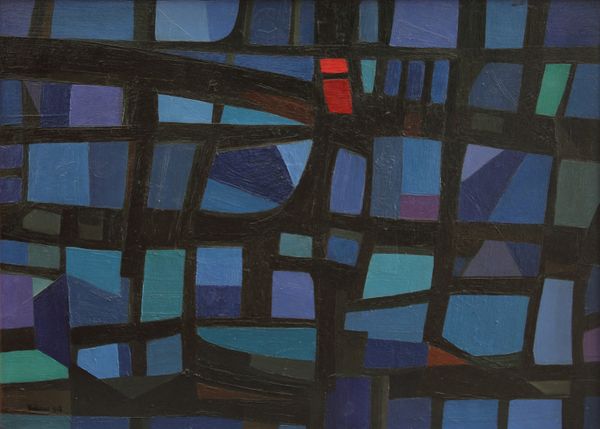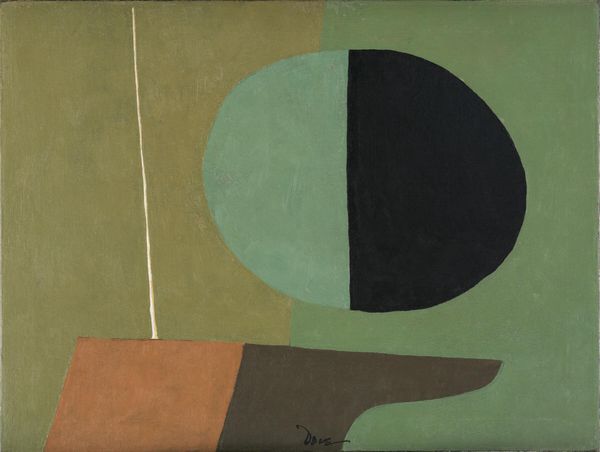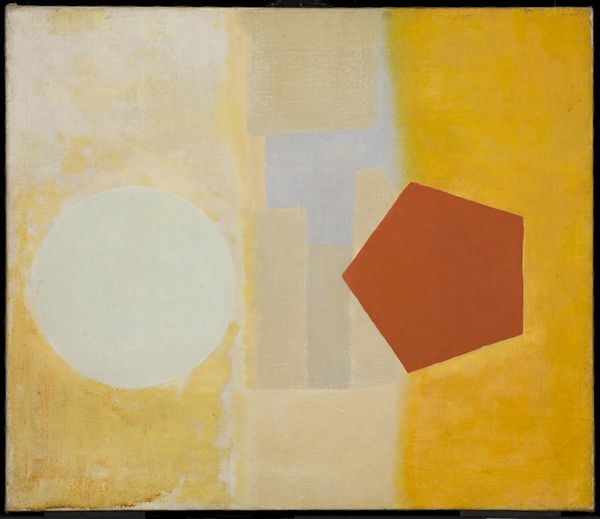
painting, oil-paint
#
abstract painting
#
painting
#
oil-paint
#
landscape
#
abstract
#
geometric pattern
#
geometric
#
expressionism
#
abstraction
Copyright: Public Domain: Artvee
Editor: This is "Joyful Mountain Landscape" by Paul Klee, created in 1929. It's an oil painting, and I’m immediately drawn to its playful geometry. The colours, although muted, create this whimsical and almost dreamlike interpretation of a landscape. What stands out to you as you look at it? Curator: The symbols Klee uses… they resonate deeply. The mountain, reduced to a triangle, echoes ancient pyramids, symbols of aspiration and permanence. But then Klee destabilizes that permanence with the joyfulness implied in the title. Look at the sun and the 'dark sun.' Light and shadow. Hope and perhaps, a premonition? What might those opposing symbols represent, do you think? Editor: Maybe the sun represents external joy, while the dark circle is internal introspection, that even in joy there can be some darkness within. Curator: Precisely. And Klee, deeply influenced by psychological theories, was clearly interested in that inner world, that complex interplay of conscious and unconscious. The little tree struggles to the light between those massive orange planes which perhaps reflect constraint and yearning. See how that single tree repeats, echoes as abstract 'ladder' and then becomes a rising mountain itself? Editor: I see it now! Like visual echoes building upon each other! How fascinating. I hadn’t considered Klee’s interest in psychology impacting these artistic choices. Curator: Klee masterfully uses archetypes to touch something primal within us. Mountains, trees, the sun – they carry so much collective meaning. The canvas becomes a landscape of the soul. These archetypes, repeated and transformed, become Klee's symbolic language. What language do we speak, within ourselves? Editor: It’s like he's tapping into a shared visual vocabulary we all instinctively understand. I'll definitely look at Klee with fresh eyes now! Curator: It’s rewarding to recognize and analyze those subconscious symbols. The cultural memory, passed down through these simple images, keeps so much information encoded for future generations.
Comments
No comments
Be the first to comment and join the conversation on the ultimate creative platform.
